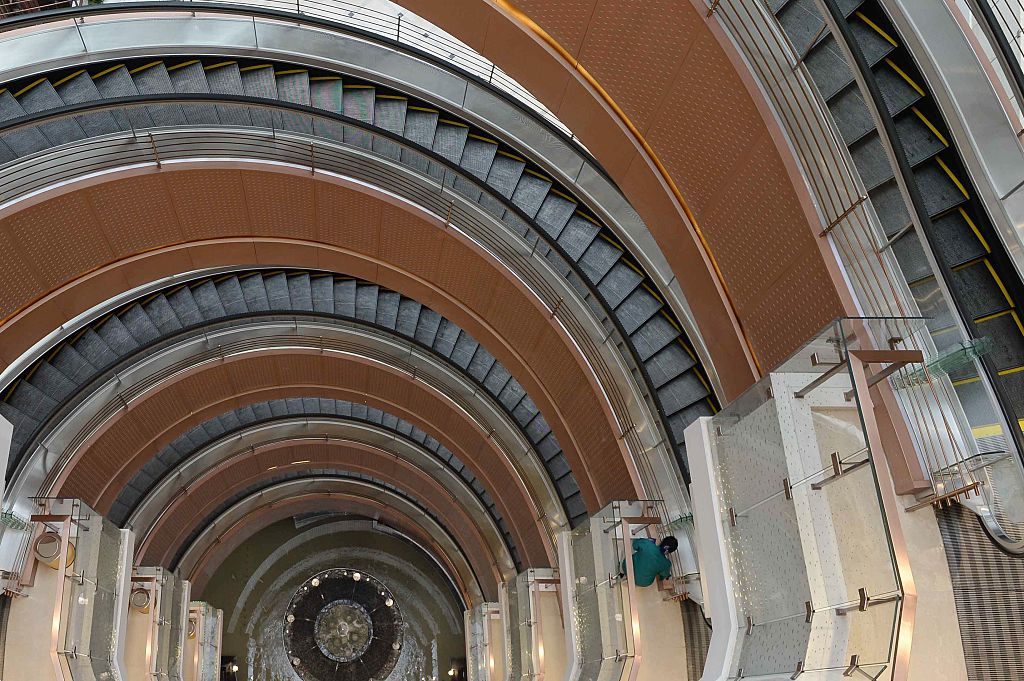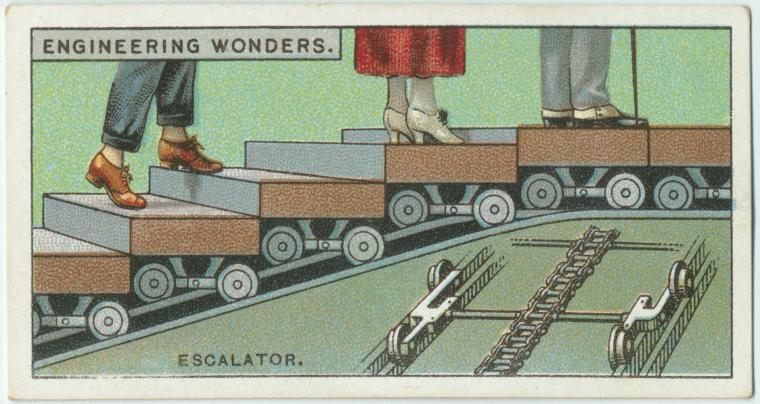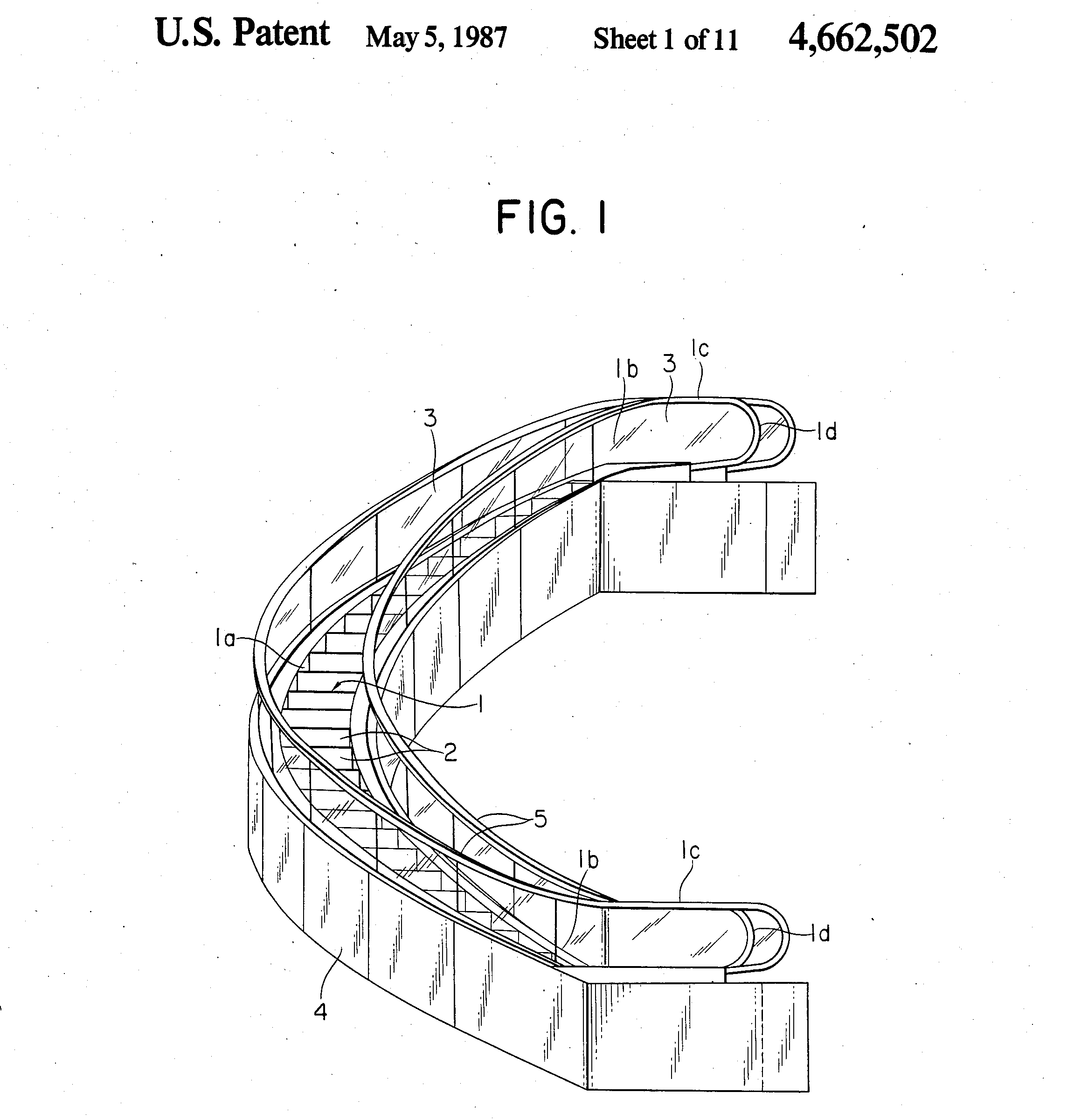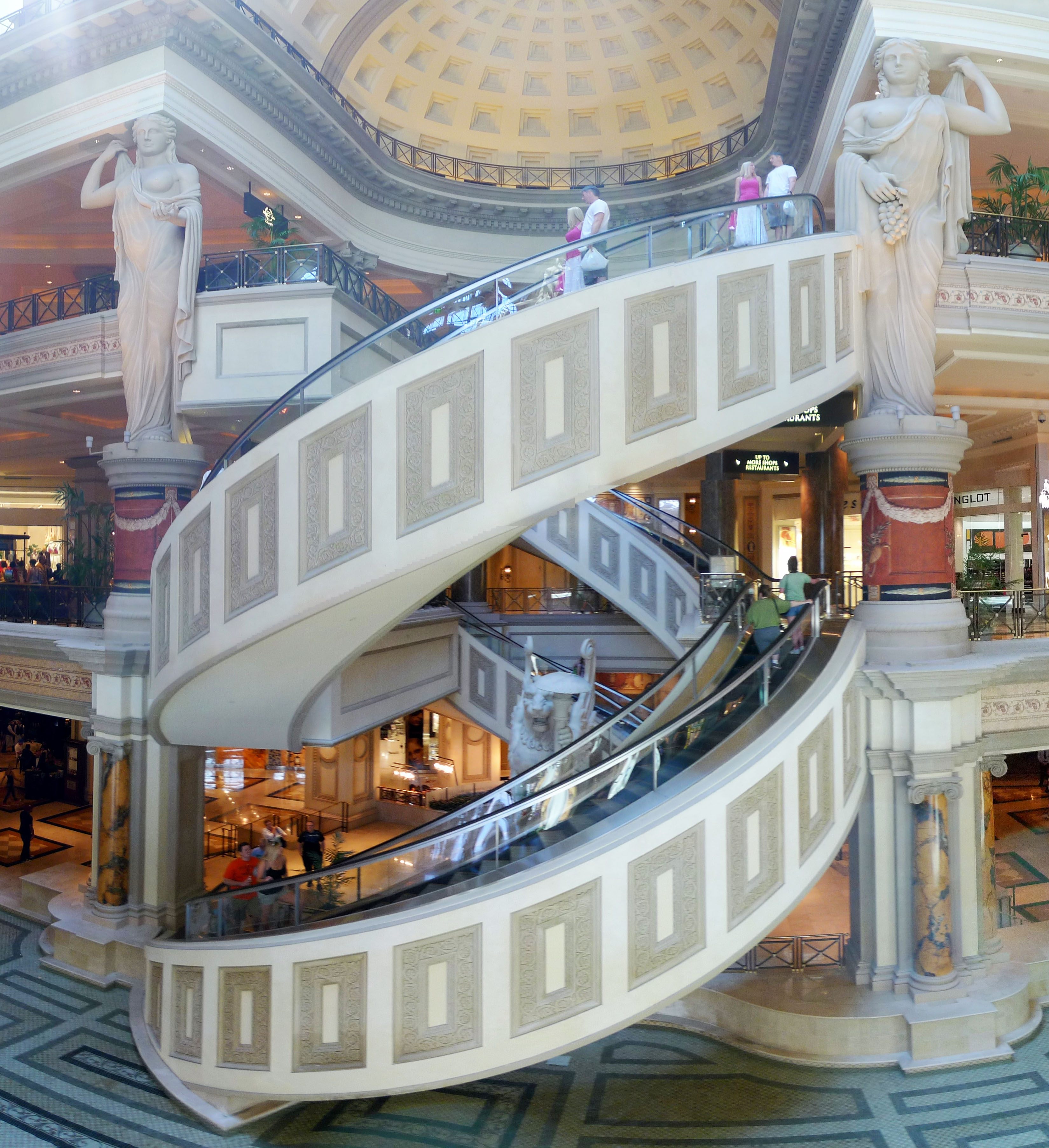Spiral Escalators Look Cool, But Do They Make Sense?
Why these curvy wonders aren’t in every shopping mall.

The world’s first spiral escalator could easily have been lost forever.
That is, if it weren’t for a routine inspection of the Holloway Road station of the London underground. One day in early 1993, an engineer was climbing through a ventilation shaft when he stumbled upon a contraption, covered in rubble and spiraling up into the duct. Forgotten about for over 80 years, the spiral escalator was built in 1906 but quickly deemed to be unsafe, boarded up, and forgotten. By the time it was found, all that was left was a dusty heap of snaking drive chains and hulking slabs of rust.
It’s not surprising that this early spiral escalator never lived to escalate. It had no stairs and was simply a sloping travelator, with guide rails along the sides. (Riders would have had to grip onto them for dear life, probably white-knuckled in terror, as they made their way up to the surface.) The escalator would have been dark, dangerous and extremely noisy—more like a test of endurance than a space-efficient way of getting from platform to pavement.

Jesse W. Reno, a Kansas-born engineer, was behind the machine. Fifteen years earlier, he’d introduced the world to the regular escalator (nicknamed “the inclined elevator”) as a ride at Coney Island, New York. It was a simple slope and just a few feet high, but revelers queued up in their droves to ride it, sitting sideways on a bench that ran along the middle. On other early examples without seats, passengers would lean forward on the slope to maintain their balance, like ski jumpers about to launch themselves into the air.

Even after they featured stairs rather than cleats, early escalators made many pedestrians very nervous. One of Britain’s first escalators, some 40 feet high, was installed in high-end department store Harrods: its then-manager, Richard Burbidge, noted in his diary that nervy shoppers had sometimes had to be revived with brandy by an attendant at the top.
But once pedestrians learned to take escalators into their stride, some began to yearn for a spiralling alternative. In his 1925 drawings of “The City of 1950”, published in Popular Science Monthly, Harvey W. Corbett, president of the Architectural League of New York, imagined spiral escalators six or seven stories high connecting underground trains through three levels of road (for fast motor traffic, slow motor traffic, and pedestrians).

Mitsubishi has been making spiral escalators since 1985, still using virtually the same technology today. They’ve installed just over 100 in the past 22 years, with around 40 in Japan. You can ride them at the Westfield shopping mall in San Francisco and Caesar’s Palace in Las Vegas. But given how amazing spiral escalators look, why aren’t there more of them?
In truth, say Yuri Kudo and Tetsuyuki Yanase, both from the company’s Buildings Systems Group, most of the spiral escalator’s advantages are aesthetic. They use as much energy as a standard escalator would and take up slightly more floor space. But, Yanase says, speaking through a translator, it’s about all about the journey.

“Imagine the people in the building using this escalator, riding it from the bottom to the top … it’s a very fun experience. You have a very panoramic view, which changes as you turn, as you slowly make your way around the arc upwards.” Like Reno’s first fairground escalator, they’re at least as much of a joyride as they are a way to get from A to B. “You have to think of escalators in a new way, as an amenity to the building,” Yasane says.
Designers and architects choose them for the wow-factor, rather than for any inherent advantage. A single one costs around $900,000 to install—at least four times the cost of an ordinary escalator.
Technically, the spiral escalator is stupidly twiddly. They require considerable, highly skilled manual labor that can’t be replicated in a factory: artisanal escalation. And there are plenty of things that can go wrong. “If there is even a slight discrepancy, they just won’t move,” Kudo says.
Imagine two people running around a curved track—the person on the outside has to travel further than the person on the inside. Spiral escalators have the same problem: somehow, the inside of the step has to move slower, and a shorter distance, than the outside, while remaining in sync.

Mitsubishi solves this problem, Yasane says, with differently sized gears for the inside and out, controlled by a motor at the top axle of the escalator. The inside one is comparably smaller and slower; the outside bigger and faster. The motor is responsible for maintaining a delicate balance between the two and making it move smoothly.
There are other trade mysteries involved, of course. Kudo laughs and laughs when asked how the handrail succeeds in turning at an angle, but divulging the escalator’s secrets proves a step too far. “It is pretty awesome,” Yasane ventures.
While Mitsubishi’s escalators certainly curve, they aren’t true spirals—at each story, pedestrians have to walk back around to the start again. For reasons of structural integrity, spiral escalators can be no more than six meters high, making a complete spiral an impossibility. Reno’s spiral escalator did manage to make a single unbroken loop, but might have been a good way to break one’s neck. Its links were “joined together with universal joints,” New Scientist reported in 1993, into a sort of chain probably driven from beneath. Now exhumed, it’s on exhibition at the London Transport museum depot in Acton, London.
But there is one more spiral escalator upstart that does purport to go all the way round. Enter the Levytator, a 2010 invention named for its designer, City University emeritus professor Jack Levy. Each individual step is curved like a sickle moon, allowing them to slot together in one continuous loop. Like Reno before him, Levy took inspiration from the London Underground. “I wondered why all the escalators had to be straight,” he told The Independent in 2011. “Sometimes it’s really convenient to go round a corner.”
In theory, the Levytator can go around any freeform curve, twisting and bending as required. It even loops back on itself, minimising both apparatus and fuel costs. But despite early excitement in the plans, this true spiral escalator seems to have struggled to make it off the ground, with no further development beyond an initial flurry of excitement six years ago.
While it might look beautiful, the spiral escalator most likely won’t ever be commonplace outside of megawatt shopping malls and high-kitsch Vegas hotels. It’s probably best thought of as destination transportation, rather than transportation to your destination.
















Follow us on Twitter to get the latest on the world's hidden wonders.
Like us on Facebook to get the latest on the world's hidden wonders.
Follow us on Twitter Like us on Facebook